($40): Matanzas Creek, a pioneering Sonoma County winery founded in 1977, produces five different and distinctive Sauvignon Blanc, each reflecting the origin of the grapes. You can practically taste and feel the volcanic soil in this Helena Bench bottling, which gives the wine individuality rarely found with this variety in California. … Read more
Category Archives: WRO Reviews
Matanzas Creek Winery, Bennett Valley (Sonoma County, California) Sauvignon Blanc 2013
($32): Matanzas Creek has always had a reputation for top-notch Sauvignon Blanc. With this Bennett Valley bottling, they maintain their exceptional track record. It’s a beautifully balanced wine with an innervating bite you’d expect from Sauvignon Blanc couple with a suave richness. … Read more
Jayson, Sonoma Coast (California) Pinot Noir 2013
($60): Jayson, Pahlmeyer’s second label, offers an introduction to the luxurious style for which Pahlmeyer has become known at a lower price. The wines are typically released earlier — the 2012 Sonoma Coast Pinot Noir is Pahlmeyer’s current release — because they are more approachable. … Read more
EnRoute, Russian River Valley (Sonoma County, California) Pinot Noir “Les Pommiers” 2013
($65): 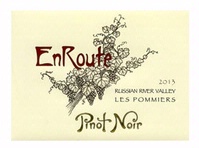 The Pinot Noirs from EnRoute (a winery started by the same talented people who founded Far Niente, Nickel & Nickel and Dolce) just get better and better. The 2013, only the 7th release, shows considerably more complexity and suaveness than previous vintages. … Read more
The Pinot Noirs from EnRoute (a winery started by the same talented people who founded Far Niente, Nickel & Nickel and Dolce) just get better and better. The 2013, only the 7th release, shows considerably more complexity and suaveness than previous vintages. … Read more
Jordan Vineyard and Winery, Alexander Valley (Sonoma County, California) Cabernet Sauvignon 2011
($53): 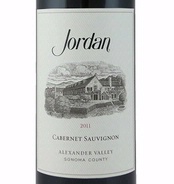 I am an enthusiastic fan of Jordan’s Cabernets because the team there has, thankfully, resisted the California trend toward super ripe, super rich, bombastic wines. Although much has changed at Jordan since their founding — the grapes no longer come solely from their vineyards — they continue to focus on Cabernet Sauvignon and Chardonnay and continue to produce harmonious wines. … Read more
I am an enthusiastic fan of Jordan’s Cabernets because the team there has, thankfully, resisted the California trend toward super ripe, super rich, bombastic wines. Although much has changed at Jordan since their founding — the grapes no longer come solely from their vineyards — they continue to focus on Cabernet Sauvignon and Chardonnay and continue to produce harmonious wines. … Read more
Louis Latour, Pouilly-Vinzelles (Burgundy, France) “En Paradis” 2012
($22): 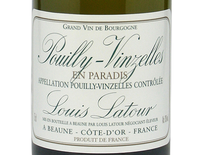 The attention wines from small growers receive from the press, sommeliers and retailers can make us overlook wines from even the best négociants. That’s always a mistake and this wine is just another case in point. Maison Louis Latour, a top-notch Beaune-based négociant, owns no land in Pouilly-Vinzelles, an appellation neighboring Pouilly-Fuissé. … Read more
The attention wines from small growers receive from the press, sommeliers and retailers can make us overlook wines from even the best négociants. That’s always a mistake and this wine is just another case in point. Maison Louis Latour, a top-notch Beaune-based négociant, owns no land in Pouilly-Vinzelles, an appellation neighboring Pouilly-Fuissé. … Read more
Louis Latour, Pouilly-Fuissé (Burgundy, France) 2012
($28, Louis Latour USA): 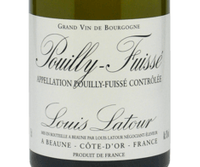 Let’s face it: Buying Pouilly-Fuissé is, figuratively speaking, akin to walking through a minefield. Wines from this appellation, the best from the Mâconnais region of Burgundy, range from insipid to stellar. This 2012, from one of Burgundy’s top négociants, is easy to recommend. … Read more
Let’s face it: Buying Pouilly-Fuissé is, figuratively speaking, akin to walking through a minefield. Wines from this appellation, the best from the Mâconnais region of Burgundy, range from insipid to stellar. This 2012, from one of Burgundy’s top négociants, is easy to recommend. … Read more
Susana Balbo, Argentina () Torrontes “Crios” 2014
($15, Vine Connections):  Malbec is Argentina’s signature red grape, while Torrontés is that country’s signature white. Fresh and floral with hints of white flowers and snappy acidity, Susana Balbo’s 2014 Torrontés is bottled springtime. The barest hint of sweetness in the finish makes it perfect as a poolside aperitif or to accompany spiced summer salads.… Read more
Malbec is Argentina’s signature red grape, while Torrontés is that country’s signature white. Fresh and floral with hints of white flowers and snappy acidity, Susana Balbo’s 2014 Torrontés is bottled springtime. The barest hint of sweetness in the finish makes it perfect as a poolside aperitif or to accompany spiced summer salads.… Read more
Susana Balbo, Mendoza (Argentina) Cabernet Sauvignon 2012
($25, Vine Connections):  Susana Balbo is a leading Argentine producer — and this well-priced Cabernet Sauvignon confirms it. It has a bit of everything — great aromatics, a hint of minerals, and black fruit flavors — but it’s all in check. … Read more
Susana Balbo is a leading Argentine producer — and this well-priced Cabernet Sauvignon confirms it. It has a bit of everything — great aromatics, a hint of minerals, and black fruit flavors — but it’s all in check. … Read more
Clos du Val, Napa Valley (California) Cabernet Sauvignon 2012
($38): Kristy Melton, Clos du Val’s new winemaker, has achieved her stated goal of making a bolder style of wine with the 2012 Cabernet Sauvignon. Though the texture is still silky and suave, some will complain about the diminished subtly in the flavor profile. … Read more
Louis M. Martini, Napa Valley (California) Cabernet Sauvignon 2012
($38): 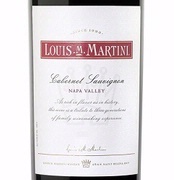 Comparing Louis Martini’s Napa Cabernet Sauvignon with its stable mate from Alexander Valley shows that the French do not have a monopoly on terroir. These two wines made from the same grape from the same vintage made by the same winemaking team truly reflect their respective sites. … Read more
Comparing Louis Martini’s Napa Cabernet Sauvignon with its stable mate from Alexander Valley shows that the French do not have a monopoly on terroir. These two wines made from the same grape from the same vintage made by the same winemaking team truly reflect their respective sites. … Read more
Clos du Val, Napa Valley (California) Merlot 2012
($35): 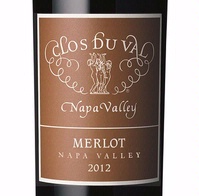 Kristy Melton, who joined Clos du Val in 2010 as assistant winemaker and is now its winemaker, is aiming for a bolder style that reflects the California sunshine. Though there’s no question that this 2012 Merlot is richer and lusher than past vintages, she’s managed to retain the silky finesse that characterizes Clos du Val’s wines.… Read more
Kristy Melton, who joined Clos du Val in 2010 as assistant winemaker and is now its winemaker, is aiming for a bolder style that reflects the California sunshine. Though there’s no question that this 2012 Merlot is richer and lusher than past vintages, she’s managed to retain the silky finesse that characterizes Clos du Val’s wines.… Read more
Clos du Val, Carneros (Napa Valley, California) Pinot Noir 2013
($32): The Carneros region of Napa, its southern end abutting San Pablo Bay, has always been a prime locale for grapes, such as Pinot Noir, that thrive in cooler climates. This lacey Pinot Noir reflects its origins with a subtle dose of earthiness that balances the bright fresh fruit profile for which the new winemaker, Kristy Melton, is aiming. … Read more
Louis M. Martini, Alexander Valley (Sonoma County, California) Cabernet Sauvignon 2012
($34): Louis Martini was one of the pioneering giants of California wine. Although the Martini family is no longer involved with the label, the wines bearing the Martini name still express the best in California wine. This Alexander Valley Cabernet Sauvignon, for example, has a harmonious mixture of bright dark fruit flavors offset by subtle herbaceous notes that add complexity. … Read more
Monteverro, Toscana Rosso IGT (Tuscany, Italy) “Verruzzo di Monteverro” 2013
($29, Opici Wines): Monteverro, whose aim is to join the top end Maremma producers, has crafted this seamless blend of Merlot, Cabernet Franc, Cabernet Sauvignon and Sangiovese as their “entry level” wine. It has the richness expected from the Bordeaux varieties grown in that region, but unexpected brightness and liveliness from Sangiovese, a grape that does not ordinarily thrive in the Maremma. … Read more
Argento, Mendoza (Argentina) Pinot Grigio 2013
($13, Blends Inc.): To their credit, winemakers throughout Argentina are experimenting with a plethora of grape varieties to see which actually work in their unique climate. It seems that Pinot Grigio, at least this one, works. A floral impression in the clean, bright and refreshing wine allows you to enjoy it either as an evening aperitif this summer or with linguine and clam sauce this summer.… Read more
Bodega Garzón, Uruguay (Uruguay) Albarino 2014
($20, Blends Inc.): If this is an example of how well Albariño does in Uruguay, it should become their national wine. Bodega Garzón has fashioned a perky and beautifully cutting aromatic white that displays unusual depth. This zippy wine will have wide spread appeal either as an aperitif or to accompany simple seafood this summer. … Read more
Bodega Garzón, Uruguay (Uruguay) Tannat 2013
($19, Blends Inc.): Tannat historical home is in southwest France, where in Madiran it makes enormously rich tannic wines (I don’t think the similarity between the grape’s name and tannin is a coincidence). In Uruguay, however, the wines made from this grape are a little lighter, but still bold, with far less aggressive tannins. … Read more
Beckmen Vineyards, Santa Ynez Valley (Central Coast, California) Grenache Rose Purisma Mountain Vineyard 2014
($25): Beckman has a knack for making excellent wines, such as this one, from traditional Rhône grapes. Unlike many California rosés, this one is truly dry, actually with a touch of pleasant bitterness in the finish that complements and amplifies the spicy wild strawberry-like flavors. … Read more
Beckmen Vineyards, Santa Ynez Valley (Central Coast, California) “Cuvée Le Bec” 2012
($25): From the first whiff, this typical Rhône blend (Grenache [43%], Syrah [34%], Mourvèdre [15%] and Counoise) is immediately engaging. It delivers a seamless combination of spice and fruit flavors — both black and red — supported by black cherry-like acidity that keeps it fresh and lively. … Read more
Talbott Vineyards, Santa Lucia Highlands (Monterey County, California) Pinot Noir Sleepy Hollow Vineyard 2013
($42): Talbott Vineyards has been one of the leaders in Pinot Noir in Santa Lucia Highlands with their wines from their Sleepy Hollow Vineyard. The 2013 is a powerful, yet balanced, Pinot Noir with great energy and freshness. Ripe cherry-like fruit flavors dominate, while savory nuances add complexity. … Read more
Grgich Hills Estate, Napa Valley (California) Cabernet Sauvignon 2012
($65): Grgich Hills Estate gets my vote for Napa’s most consistently excellent Cabernet that’s widely available. Though not inexpensive (although it is considering the price of top Napa Cabernet), you don’t need to be a hedge fund manager to buy it. … Read more
Arnaldo-Caprai, Colli Martani Grechetto (Umbria, Italy) “Grecante” 2013
($20): Arnaldo-Caprai, one of the top producers of Sagrantino, a sturdy red from Umbria, also makes this enticing white from Grechetto, a little known — at least in the U.S. — white grape. Mineraly and slightly creamy, it has good depth and a lovely firmness. … Read more
Domaine Dominique Guyon, Hautes Côtes de Nuits (Burgundy, France) Les Dames de Vergy 2012
($35, Esprit du Vin): 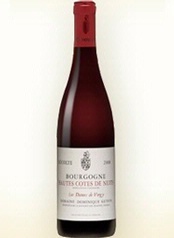 Though the Hautes Côtes de Nuits, the higher, less well-situated land just west of the Côte d’Or, is a rather down-market appellation, it can be the place to fine authentic Burgundy, especially from a dedicated producer such as Domaine Dominique Guyon. … Read more
Though the Hautes Côtes de Nuits, the higher, less well-situated land just west of the Côte d’Or, is a rather down-market appellation, it can be the place to fine authentic Burgundy, especially from a dedicated producer such as Domaine Dominique Guyon. … Read more
Col d’Orcia, Rosso di Montalcino (Tuscany, Italy) 2012
($22, Palm Bay International): I’m a sucker for well-made Rosso di Montalcino because they deliver a glimmer of the grandeur of Brunello at an affordable price without having to cellar them. Not a boisterous wine, Col d’Orcia’s 2012 Rosso di Montalcino has a great perfume, followed by seductive elegance supported by fine tannins. … Read more
Col d’Orcia, IGT Toscana (Italy) “Spezieri” 2013
($14, Palm Bay International): When I’m looking for simple enjoyable wine for an uncomplicated informal meal, or we’re having a crowd over for burgers, I often turn to my favorite producers and what they call their “entry” level wine. In Tuscany, they’re usually a blend of Sangiovese, the region’s mainstay grape, with something else, in this case Ciliegiolo. … Read more
Col d’Orcia, Brunello di Montalcino (Tuscany, Italy) Poggio al Vento 2006
($120, Palm Bay International): 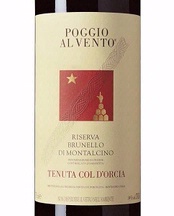 It should come as no surprise that this is an outstanding wine. The producer is one of Montalcino’s best, the vineyard’s location is ideal with perfect elevation and exposure, and the vintage is outstanding. At almost a decade of age, the wine is just starting to show its grandeur. … Read more
It should come as no surprise that this is an outstanding wine. The producer is one of Montalcino’s best, the vineyard’s location is ideal with perfect elevation and exposure, and the vintage is outstanding. At almost a decade of age, the wine is just starting to show its grandeur. … Read more
Billecart-Salmon, Champagne (France) Brut Rosé NV
($88): Rosé Champagnes are versatile. They are a luxurious treat as a welcome drink or aperitif for guests — or just for you and a spouse or significant other. All too often, people forget that Champagne is a wine, and that rosé Champagne especially has enough power and intensity to be an excellent choice with lots of different — and often hard to match — foods. … Read more
Domaine Antonin Guyon, Savigny-lès-Beaune (Burgundy, France) Les Goudelettes 2011
($37, L’Esprit du Vin): The wines from Savigny-lès-Beaune, a village just north of Beaune (lès means near), lacking the prestige of its more famous neighbor, can offer good value when they are made by top producers, such as Domaine Antonin Guyon. … Read more
Domaine Antonin Guyon, Corton (Burgundy, France) Clos du Roy 2011
($112, L’Esprit du Vin): Dominique Guyon, who runs the family estate founded by his grandfather, uses the traditional 18th century spelling, Clos du Roy, instead of the more common Clos du Roi. Regardless of the spelling, royalty is in the bottle. … Read more
Domaine Bertagna, Chambolle Musigny Premier Cru (Burgundy, France) Les Plantes 2009
($95, L’Esprit du Vin): 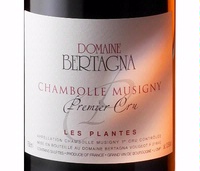 The most amazing thing about this wine is its availability. Most red Burgundies from 2009 (a stellar year in my view) have long since disappeared from the retail market. I have said it before, and it’s worth repeating since I’ve tasted scores more since their release, you can’t have too many 2009 red Burgundies in your cellar. … Read more
The most amazing thing about this wine is its availability. Most red Burgundies from 2009 (a stellar year in my view) have long since disappeared from the retail market. I have said it before, and it’s worth repeating since I’ve tasted scores more since their release, you can’t have too many 2009 red Burgundies in your cellar. … Read more
Château Tour de Pez, St. Estèphe (Bordeaux, France) 2012
($23): This is the kind of wine that made Bordeaux famously popular in the past and could be the kind to revive people’s interest in Bordeaux. Unusually charming for a young wine from St. Estèphe, it leads with herbal aromas followed by plenty of intensity without pandering to over ripeness. … Read more
Château Haut-Bacalan, Pessac-Léognan (Bordeaux, France) 2012
($40):  This wine shows that Bordeaux need not be super expensive nor put in the cellar for a decade or two before pulling the cork. Its slightly burnt ash character identifies it as a wine from Pessac-Léognan, the prestigious subregion of Graves. … Read more
This wine shows that Bordeaux need not be super expensive nor put in the cellar for a decade or two before pulling the cork. Its slightly burnt ash character identifies it as a wine from Pessac-Léognan, the prestigious subregion of Graves. … Read more
Miraval, Côtes du Provence (France) 2014
($25): 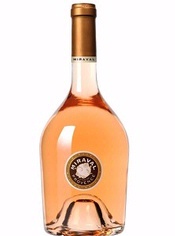 I suspect much of the enthusiasm for this wine is that Brad Pitt and Angelina Jolie own the property. Indeed, the Provence estate near Brignoles is where they were married. Not being a partisan of rosés, I was prepared to dismiss it as just marketing hype with its Champagne-like bottle and perfect pink color that could have been chosen by an interior designer. … Read more
I suspect much of the enthusiasm for this wine is that Brad Pitt and Angelina Jolie own the property. Indeed, the Provence estate near Brignoles is where they were married. Not being a partisan of rosés, I was prepared to dismiss it as just marketing hype with its Champagne-like bottle and perfect pink color that could have been chosen by an interior designer. … Read more
Peter Yealands, Marlborough (New Zealand) Pinot Gris 2014
($16, Palm Bay International): 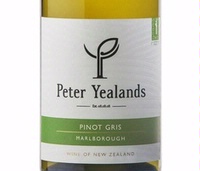 There’s no doubt that the Marlborough name is associated with edgy Sauvignon Blanc. Peter Yealands’ Pinot Gris shows this New Zealand appellation is not a one-trick pony. Definitely in the Pinot Gris (as opposed to the lighter Pinot Grigio) style, it delivers richness offset by tingling acidity. … Read more
There’s no doubt that the Marlborough name is associated with edgy Sauvignon Blanc. Peter Yealands’ Pinot Gris shows this New Zealand appellation is not a one-trick pony. Definitely in the Pinot Gris (as opposed to the lighter Pinot Grigio) style, it delivers richness offset by tingling acidity. … Read more
Peter Yealands, Awatere Valley (New Zealand) Sauvignon Blanc Yealands Estate Single Vineyard 2013
($25, Palm Bay International): 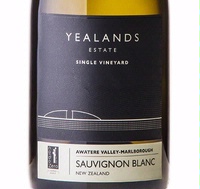 The Marlborough region is composed of two principal valleys, the more well-known Wairau, home to Cloudy Bay as well as many others with broad name recognition, the Awatere, just to the south. Leigh Alderton, Vice-President of Sales for the USA for Peter Yealands, describes it as being cooler, drier, and windier, producing smaller grapes with more concentrated flavors. … Read more
The Marlborough region is composed of two principal valleys, the more well-known Wairau, home to Cloudy Bay as well as many others with broad name recognition, the Awatere, just to the south. Leigh Alderton, Vice-President of Sales for the USA for Peter Yealands, describes it as being cooler, drier, and windier, producing smaller grapes with more concentrated flavors. … Read more
Teruzzi & Puthod, Vernaccia di San Gimignano (Tuscany, Italy) 2014
($12, Palm Bay International): Despite being Italy’s 1st DOC (Denominazione Origine Controllata) Vernaccia di San Gimignano remains under the radar, which is great for consumers because, as this wine shows, they can offer great value. Fresh, crisp and cutting, this bright wine is easy to recommend. … Read more
Rocca delle Macìe, Chianti Classico Gran Selezione (Tuscany, Italy) “Sergio Zingarelli” 2010
($130, Palm Bay International): 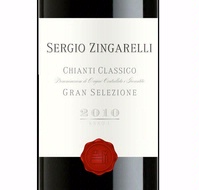 Gran Selezione, a category that debuted only in 2014, is intended to be for Chianti Classico of exceptional character. For a wine to receive that designation it must come from estate grapes (no purchased fruit), be aged even longer than a Chianti Classico Riserva and pass a tasting panel. … Read more
Gran Selezione, a category that debuted only in 2014, is intended to be for Chianti Classico of exceptional character. For a wine to receive that designation it must come from estate grapes (no purchased fruit), be aged even longer than a Chianti Classico Riserva and pass a tasting panel. … Read more
Rocca delle Macìe, Chianti Classico (Tuscany, Italy) 2013
($16, Palm Bay International): Wines from the Chianti Classico region remain extremely popular. Indeed, we Americans drink more of them than the Italians. And this one from Rocca delle Macìe, a top producer, shows why. The 2013 is fresh with a food-enhancing bite and the non fruit — earthy — flavors that make Chianti Classico so appealing. … Read more
Ferrari, Trentino DOC (Italy) Blanc de Blancs “Perlé” 2007
($42, Palm Bay International): Ferrari is one of, if not the, top producer of sparkling wine in Trentino. This splendid one, Perlé, is made entirely from Chardonnay grown in a single vineyard. A firm backbone of acidity supports and balances its suave creaminess. … Read more
Planeta, Etna Bianco DOC (Sicily, Italy) 2014
($24): At first glance, Sicily seems too hot to grow grapes for top quality wines. Indeed, it’s the mountains there that supply the needed elevation to keep the grapes cool as they ripen and that explain why Sicily is home to some fabulous wines, such as this one. … Read more
Travaglini, Gattinara Riserva (Piedmont, Italy) 2009
($60, Palm Bay International): Gattinara, a tiny appellation of only about 250 acres in Piedmont lies north of Barolo and like its more esteemed neighbor, uses on the Nebbiolo grape exclusively. Travaglini, who owns about 125 acres, or roughly half of the appellation and is the major producer, bottles an array of wines labeled Gattinara. … Read more
Fontanafredda, Barolo (Piedmont, Italy) Serralunga d’Alba 2010
($45, Palm Bay International): Add Fontanafredda’s Serralunga d’Alba to your list of 2010 Barolo wines for your cellar. In a decade you will not be disappointed. The power that follows the enormous initial floral impact is unexpected, startling and then captivating. … Read more
Feudi di San Gregorio, Taurasi (Campania, Italy) 2010
($40, Palm Bay International): 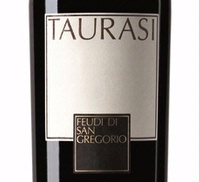 There is no question in my mind that the wines from Taurasi, a small DOCG in Campania, rank with Italy’s, and the world’s, greatest wines. The Aglianico grape thrives in the climate and volcanic — it’s near Vesuvius — soil of the region.… Read more
There is no question in my mind that the wines from Taurasi, a small DOCG in Campania, rank with Italy’s, and the world’s, greatest wines. The Aglianico grape thrives in the climate and volcanic — it’s near Vesuvius — soil of the region.… Read more
Castello di Verrazzano, Chianti Classico Riserva (Tuscany, Italy) 2011
($40, Palm Bay International): Castello di Verrazzano’s Chianti Classico Riserva comes from grapes grown in their vineyards that are at a higher elevation on the slope than other parcels. The erosion and drainage at that part of the slope always results in concentrated grapes that produce powerful wines. … Read more
Tenuta Le Potazzine Gorelli, Brunello di Montalcino (Tuscany, Italy) 2010
($64): Potazzine Gorelli’s 2010 Brunello ranks with the best from that vintage. It has a beguiling combination of dark cherry-like flavors, firm — not hard — tannins and a paradoxical delicacy. Everything is in harmony. Flavors unfold as it sits in the glass and dance across the palate. … Read more
Talenti, Brunello di Montalcino (Tuscany, Italy) 2010
($47): 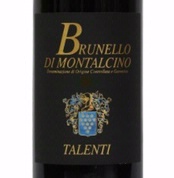 It’s worth repeating: The 2010s from Brunello di Montalcino are staggeringly good. By and large, they are beautifully balanced with tannins that lend support without being astringent. Talenti’s was one of my favorites from the line up of 2010 Brunello I tasted in Montalcino this past February. … Read more
It’s worth repeating: The 2010s from Brunello di Montalcino are staggeringly good. By and large, they are beautifully balanced with tannins that lend support without being astringent. Talenti’s was one of my favorites from the line up of 2010 Brunello I tasted in Montalcino this past February. … Read more
M. Marengo, Barolo (Piedmont, Italy) “Bricco delle Viole” 2010
($60, Marc de Grazia Selection): I was unfamiliar with this producer until recently when I had the opportunity to taste a range of their wines at a tasting in Boston put on by their importer. Now, I’ll buy anything they make. … Read more
Fratelli Revello, Barolo (Piedmont, Italy) “Gattera” 2010
($52, Marc de Grazia Selection): Similar to many other Barolo producers, Fratelli Revello made more than one Barolo in 2010, which creates a potentially confusing situation for consumers. This one, Gattera, is from a single vineyard in La Morra and is aged in large old barrels. … Read more
M. Marengo, Barolo (Piedmont, Italy) “Brunate” 2010
($62, Marc de Grazia Selection): 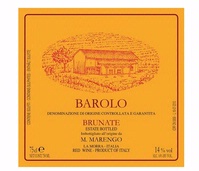 Barolo experts and aficionados agree that Brunate, a vineyard than spans both communes of Barolo and La Morra, is one of the top spots in the Barolo DOCG. Marengo owns about 3 acres of this 62-acre vineyard and from it they have produced an irresistible wine in 2010. … Read more
Barolo experts and aficionados agree that Brunate, a vineyard than spans both communes of Barolo and La Morra, is one of the top spots in the Barolo DOCG. Marengo owns about 3 acres of this 62-acre vineyard and from it they have produced an irresistible wine in 2010. … Read more
